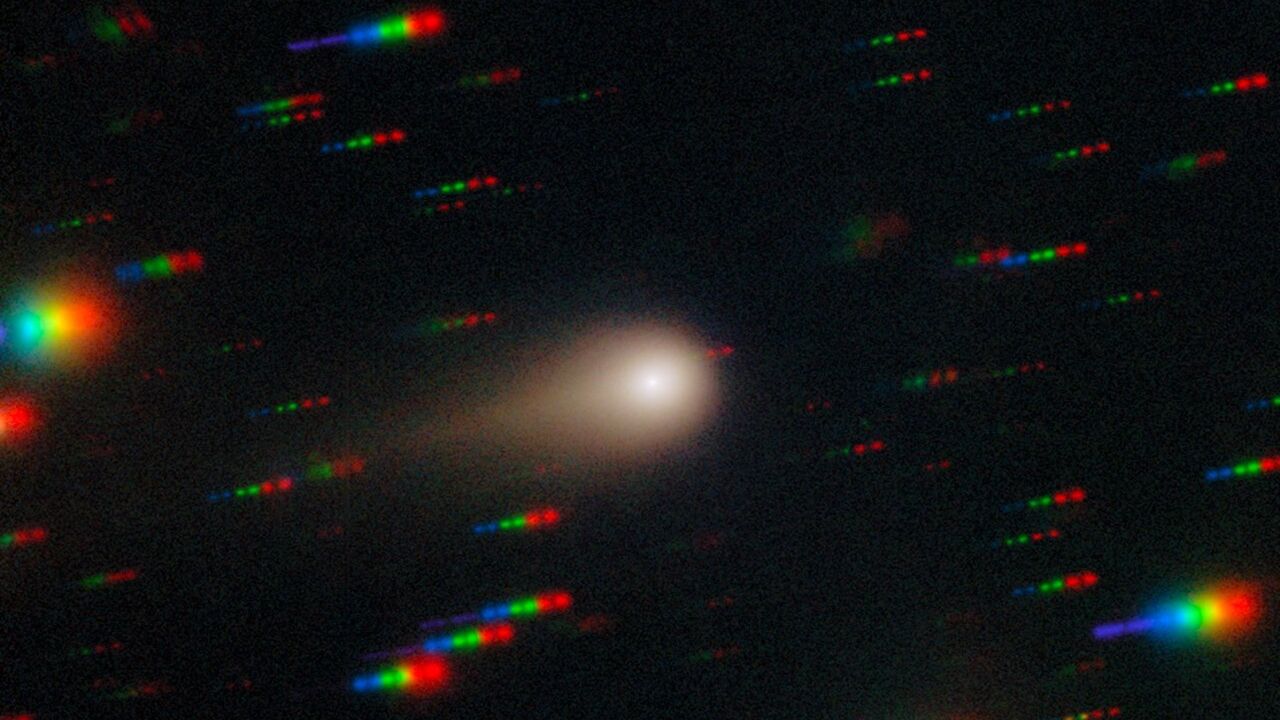New observations from the James Webb Space Telescope (JWST) have uncovered significant changes in comet 3I/ATLAS, revealing how billions of years of cosmic radiation have transformed its surface. Researchers determined that the comet has developed a deep irradiated crust, altering its original composition during its lengthy journey through the Milky Way. This transformation suggests that 3I/ATLAS now reflects the impact of its interstellar environment rather than the materials from its home star system.
New Insights from Observations
The findings were shared in a study posted to the preprint server arXiv on October 31, 2023, although they have not yet undergone peer review. Researchers utilized JWST observations alongside computer simulations to analyze the comet’s composition. They concluded that the comet’s high levels of carbon dioxide (CO2) enrichment are the result of exposure to cosmic rays over its estimated lifespan of 7 billion years.
Galactic cosmic rays, which are high-energy particles originating from outside the solar system, play a crucial role in this transformation. As these particles collide with carbon monoxide (CO) in space, they convert it into carbon dioxide. While Earth’s heliosphere provides some protection from this radiation, the absence of such shielding in interstellar space means that 3I/ATLAS has been significantly affected.
According to Romain Maggiolo, the lead author of the study and a research scientist at the Royal Belgian Institute for Space Aeronomy, “It’s very slow, but over billions of years, it’s a very strong effect.” The research indicates that the irradiated crust of comet 3I/ATLAS extends to a depth of approximately 15 to 20 meters (50 to 65 feet).
Future Implications for Research
As comet 3I/ATLAS continues its journey around the sun, it reached perihelion, its closest point to the sun, on October 29, 2023. The increased heat from this proximity causes the comet’s ice to sublimate, releasing gases primarily from its outer irradiated layer. Researchers anticipate that post-perihelion observations may reveal more about the comet’s interior composition, which may still contain pristine materials from its origin.
Maggiolo expressed excitement about comparing observations taken before and after perihelion to gain insights into the comet’s initial composition. “Maybe by looking at these differences, we can have some indication about its initial composition,” he noted.
Since its discovery in July 2023, comet 3I/ATLAS has been observed by various telescopes, revealing that it travels through our solar system at speeds exceeding 130,000 mph (210,000 km/h) in a remarkably flat trajectory. Some studies suggest that this comet could be up to 3 billion years older than our solar system, which has an estimated age of 4.6 billion years.
The current research builds upon earlier studies that highlighted 3I/ATLAS’s high CO2 content based on JWST observations from August and data from NASA’s SPHEREx orbiter. The team adapted models from previous research on a domestic comet, 67P, to apply their findings to 3I/ATLAS, utilizing laboratory experiments that simulate cosmic ray effects.
While the simulations provide valuable insights, they may not fully replicate the conditions in interstellar space. Nonetheless, they offer a significant understanding of the changes that comets like 3I/ATLAS experience throughout their extensive journeys.
Maggiolo emphasized the importance of acknowledging the aging processes affecting the comet. “We have to be careful and take into account aging processes, so it’s more work for scientists, but [3I/ATLAS] remains very interesting,” he concluded. As researchers continue to examine this cosmic traveler, the insights gained may reshape our understanding of interstellar objects and their origins.
